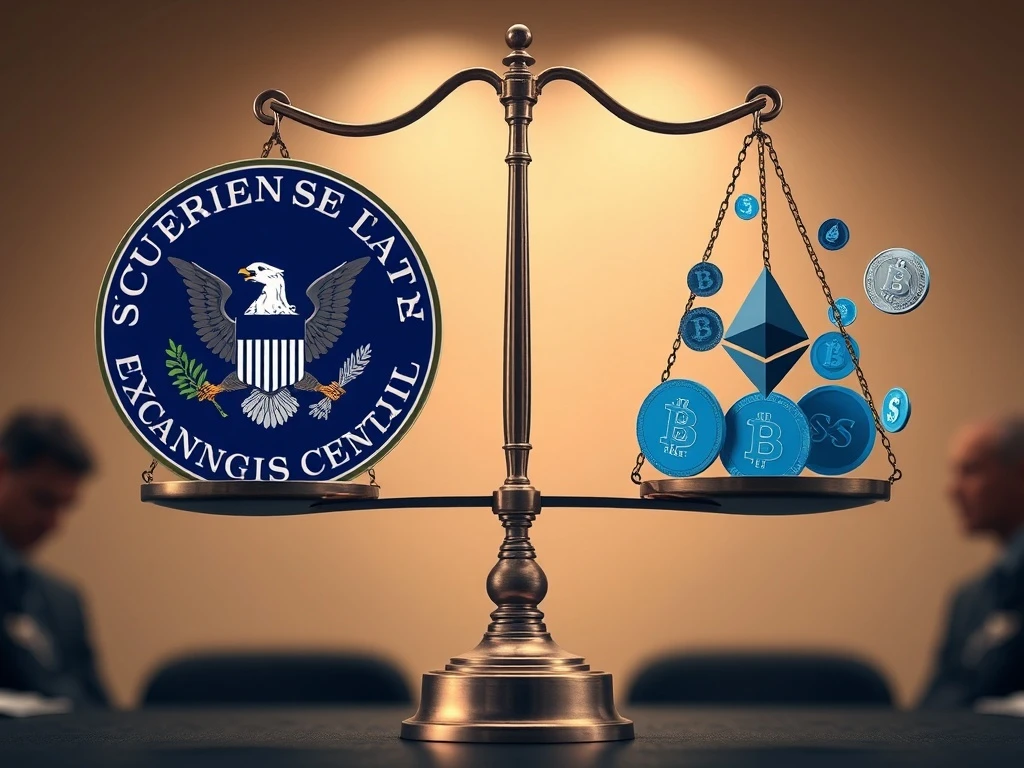SEC Signals Pivotal Shift: “Very Few” Crypto Tokens Are Securities

The cryptocurrency world often grapples with regulatory uncertainty. However, a recent statement from SEC Chair Paul Atkins offers a potential turning point. Atkins suggested only a small fraction of crypto tokens should be considered securities. This marks a significant departure from previous stances. This shift could redefine how the SEC approaches digital assets. It also provides much-needed clarity for the evolving market.
Understanding the SEC‘s Evolving Stance on Crypto Tokens
US Securities and Exchange Commission (SEC) Chair Paul Atkins recently delivered a pivotal address. He spoke at the Wyoming Blockchain Symposium in Jackson Hole. Atkins indicated a dramatic shift in the agency’s perspective. He stated, “There are very few, in my mind, tokens that are securities.” This contrasts sharply with prior interpretations. Former SEC Chair Gary Gensler, for instance, maintained that the “vast majority” of crypto assets qualified as securities. Gensler based this assessment on the long-standing Howey test. This legal framework determines what constitutes an investment contract.
Atkins emphasized that the classification depends on the “package around it.” It also hinges on “how that’s being sold.” This means the token itself may not be the security. Rather, the surrounding circumstances dictate its status. This nuance is crucial for developers and projects. It offers a clearer path forward for innovation. The agency, he affirmed, will “plow forward” with this revised understanding. This represents a significant policy adjustment. It reflects a growing recognition of crypto’s unique characteristics. Consequently, the industry awaits further guidance.
Project Crypto: Shaping Digital Asset Regulation
The SEC is actively pursuing its “Project Crypto” initiative. This program aims to establish clear rules for digital asset regulation. Chair Atkins detailed its objectives during his symposium address. The initiative seeks to create a predictable regulatory environment. This framework will guide companies in the crypto space. Atkins affirmed the SEC’s intention to forge its own path. This independence is notable. Members of Congress are also considering new legislation.
The SEC’s approach focuses on the substance of transactions. It looks beyond the mere existence of a token. This practical view could reduce regulatory burdens. It may also foster innovation within the blockchain sector. Companies need clear guidelines. Therefore, this initiative is vital. It seeks to balance investor protection with market growth. Project Crypto represents a proactive step. It addresses the complexities of the digital economy.
Congressional Push for Clear Market Structure
While the SEC charts its course, Congress also seeks to establish a comprehensive market structure for digital assets. Lawmakers are working on new legislation. This aims to provide “clear rules of the road.” The US House of Representatives passed the Digital Asset Market Clarity (CLARITY) Act in July. This bill represents a significant legislative effort. It seeks to define regulatory boundaries.
Leaders in the Senate Banking Committee are building on this momentum. They plan to introduce their own version of market structure legislation. The Senate is scheduled to return from recess on September 2. This timeline suggests rapid progress. Senate Banking Committee Chair Tim Scott also spoke at the Wyoming Blockchain Symposium. He expressed optimism about bipartisan support. Scott suggested that as many as 18 Democrats might join Republicans. This collaboration could ensure passage of market structure legislation. Such broad support would signal a unified approach. It would provide much-needed certainty for the crypto industry.
Navigating the Howey Test in the Modern Crypto Era
The Howey Test remains a cornerstone of securities law. It helps determine if an asset qualifies as a security. However, applying it to crypto tokens has proven challenging. Former SEC Chair Gensler broadly applied the test. He often deemed most tokens as securities. Chair Atkins’ recent remarks indicate a more nuanced interpretation. He suggests that the test’s application depends heavily on context. This context includes the offering’s specific details.
This evolving interpretation could reduce the number of tokens classified as securities. It might free many projects from stringent SEC oversight. Consequently, it could encourage more innovation in decentralized finance. Companies must still structure their offerings carefully. They need to ensure compliance with the law. This shift in perspective offers a glimmer of hope. It promises a more adaptable regulatory environment. The industry watches closely. It awaits the full implications of these policy changes.
The Future of Digital Asset Regulation and Market Certainty
The combined efforts of the SEC and Congress point towards a future of greater regulatory clarity. Chair Atkins’ statements signal a pragmatic approach. This approach recognizes the unique nature of blockchain technology. Furthermore, congressional initiatives aim to establish a clear market structure. This dual effort is critical for the industry’s maturation.
Stakeholders across the crypto ecosystem welcome these developments. They anticipate a more stable operating environment. Reduced uncertainty can attract more institutional investment. It can also foster mainstream adoption. The ongoing dialogue between regulators and innovators is essential. It ensures that future policies are both effective and fair. The coming months will reveal the full impact of these pivotal shifts. They will shape the landscape of digital assets for years to come.







